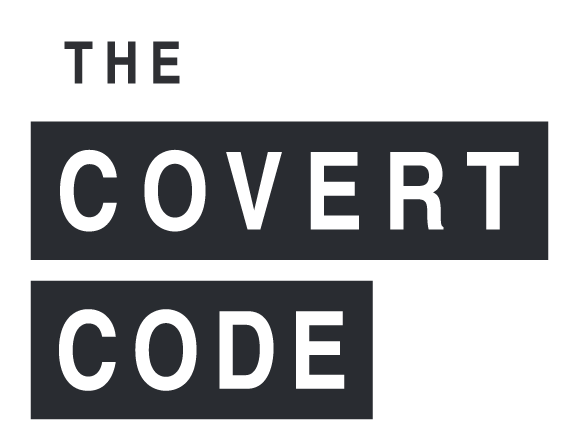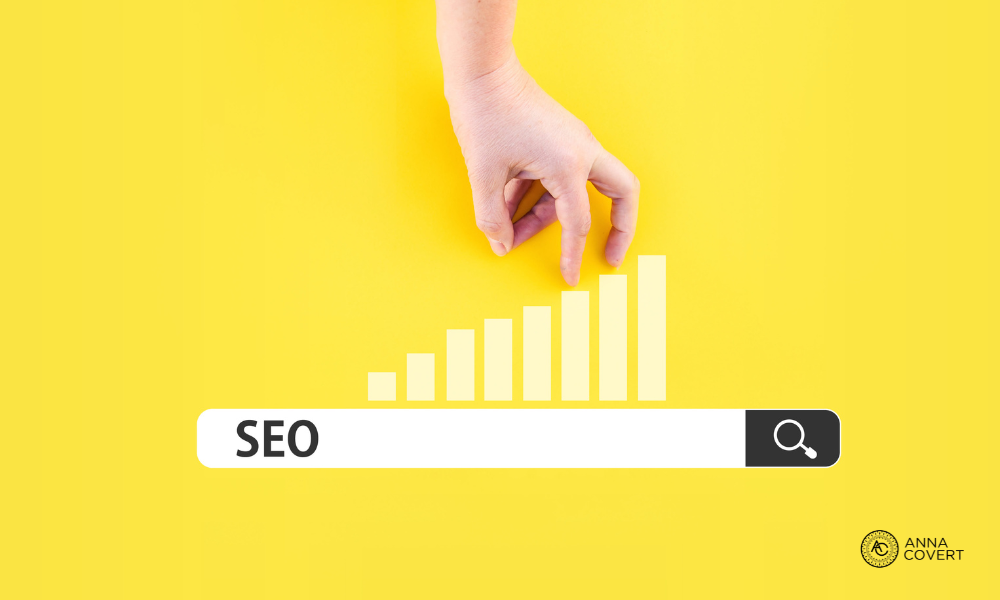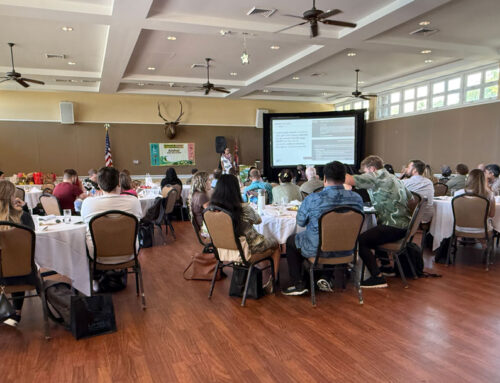To this day, SEO is one of the most common things clients ask about. It was a buzzword that stung, but is it worth spending money on? This chapter is sure to upset a lot of people, but believe me when I tell you that committing to paid SEO services is one of the easiest ways to be taken advantage of as a business owner. SEO is the darkest of the dark arts, and, like all digital tools, has changed dramatically over the past few decades. So, what the heck is it anyway?
SEO, or Search Engine Optimization, and can be broken down by the baseline metric of visibility. A search engine’s job is to deliver the best, most applicable content to the consumer. How search engines make money is by retaining high user adoption. So, the goal of Google, Yahoo, Firefox, Safari, Bing, and all the search engines is to command more searches from their distinct browsers. The more daily users they maintain, the easier it is to monetize user access and sell their influence to advertisers or political entities. For them to gain loyalty or adoption, they need to create the smoothest, most efficient browsing experience possible, and that variable experience must effectively translate across devices. That means delivering the best, most relevant content to the consumer so they can find what they’re looking for fast, very fast (ideally, at the top of the first page of results). It means providing a safe, secure place to browse and enjoy content and communities across devices seamlessly—the fewer interruptions, the better.
So, how do the search engines know what content is most relevant to the end user? The answer is divided into two parts: On-Site SEO and Off-Site SEO.
On-Site SEO: The most important thing for most companies is to have a well-defined content strategy on their website. Whether it’s Google, Bing, any and all engines have these tiny little robots that scan website content and evaluate content, design, and accessibility. Text, images, and videos may all be part of this data collection, but the most important thing to remember is that this process can’t read an image, so if we want that content to count, we need to provide a written description of the image so the search engine can add those keywords to our total score, or rank. We call these alt tags, and they go behind the picture in code but are shown over it to the end user when they hover over the image.
Anna’s Tip:
There are a plethora of uses for Alt tags, especially in catering to sight-impaired users, and are critical to website accessibility. Thorough descriptions of images in this space improve the overall quality of said images and give all users the opportunity to see exactly what your business has to offer. At the same time, increase the total relevant keywords on your site to bolster your website’s rank in the search engines you advertise on.
Once the search engine has scanned your website, it creates a rank of relevance. Relevance pertains to the keywords you’re bidding for, the content of both your website and your ad, location, and more, while measuring those metrics against what the customer is searching for. For example, let’s say we are selling Tacos at our food truck in Denver. A hungry customer opens Google and searches for “Taco Trucks Denver,” and Google gets to work identifying, out of all the websites it crawled, how many references to “Taco Trucks Denver” did it find? If your website has 10 pages and 20 references to the keyword phrase and a competitor has 100 pages with 500 references, who do you think will appear higher in search? Duh, the competitor. That’s why companies have blogs; sure, people read them, but the primary goal is to continue to increase website content and keyword counts so that our site is seen as more relevant than other sites. The problem with this is the lack of resources. Will your company ever create more content than Food & Wine or a local magazine pumping out hundreds of pages of content every month? In some competitive industries like solar, you’re up against a lot of big boys — SolarReviews, Best Company, Yelp, Angi, BBB, EnergySage— the list is long. The result is that even if you add a unique article every day to your blog, which many small businesses don’t have the capacity to accomplish, you can’t guarantee that you will be on the first page of Google. It’s a revolving door, and others are also creating content worldwide. Even then, let’s say we contract an SEO company and we agree that “Solar Company Arizona” is the keyword we care most about and for people physically living in Phoenix, we want to be organically at the top of that search. The SEO company gets us there, and now we enter maintenance mode, working hard and spending thousands every month to keep our position. Worth it? Well, what if someone searches for “Arizona’s Best Solar Company” or “Solar Arizona Company”? The combination of the search results changes for each keyword phrase (it’s the sequence of the keywords). So now you need to spend more money to index for how many potential sequences of the popular searches? The math doesn’t add up. Especially when I can guarantee your top-page placement for a fraction of the cost with a Google or Microsoft Search Ad. So, why do we do SEO at all? Because, like all digital tools, they work in tandem. Unfortunately, it does matter.
On-site SEO directly impacts your customers journey from search to visit, and for some designated as disabled, how they experience your site. It also impacts your search impression share rank, which has a meaningful correlation to your cost-per-click when advertising in search. The better your rank, the less you will have to spend to reach more people. Why? The search engines job is to match each customer with the best results so they are happy and continue to use Chrome, Firefox, Edge or said browser for all searches forever (and from all devices). Like all dating sites, if you’re super hot, then the platform wants to make sure you’re a top result and easy to find (Hinge, for example, places such commodities in the Standouts section within its interface) so people keep coming back for more. That is to say, the best results look good and are easy to find.
Once the search is initiated, organic results will appear below the paid ads and have a few important elements that you will want to be in control of to increase the likelihood of a customer clicking on your link over a competitor. The meta title is the first large headline, and the meta description is the two lines of copy beneath the result. How they generate is whether your company either sets them manually, or if you don’t, the search engine will pull the first allotted number of characters on your website page and show those. The easiest way to tell is by seeing a dot-dot-dot at the end of either the Meta Title or Meta Description. That means that the characters exceeded the maximum allowed. It also results in a strange description for the customer.
See, in this example for Denver Taco Truck, 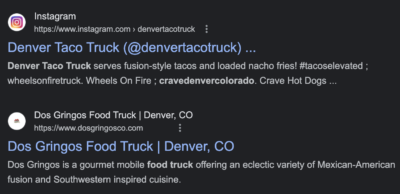 the IG example has “Wheels On Fire” and other strange references in the description because Google is fabricating meta descriptions using site copy off the linked page in order (every text on the page) vs. the second reference of “Dos Gringos Food Truck” has an exact description and is more relevant to me, the searcher (no dot dot dot at the end). This helps increase click-through-rates because the searcher knows what they can expect to see after they click through to the site. Not setting accurate or thoughtful meta descriptions leads to high bounce rates. A bounce happens when a customer clicks on your website and then doesn’t complete a full landing. They see the site and click right out, closing the tab, returning to the search page, or moving on to a different search/URL entirely. They may also hover over your first page or scroll down before making a full exit.
the IG example has “Wheels On Fire” and other strange references in the description because Google is fabricating meta descriptions using site copy off the linked page in order (every text on the page) vs. the second reference of “Dos Gringos Food Truck” has an exact description and is more relevant to me, the searcher (no dot dot dot at the end). This helps increase click-through-rates because the searcher knows what they can expect to see after they click through to the site. Not setting accurate or thoughtful meta descriptions leads to high bounce rates. A bounce happens when a customer clicks on your website and then doesn’t complete a full landing. They see the site and click right out, closing the tab, returning to the search page, or moving on to a different search/URL entirely. They may also hover over your first page or scroll down before making a full exit.
An exit occurs when the customer makes a full landing, but then you might experience a high bounce rate on the page if your site design is poor or what the customer expected to see was not what you delivered. The top reasons for bounce are that the site was too slow to load, the design was poor (not aesthetically appealing, broken links, easy-to-recognize bugs), or the result was not expected. Remember when we talked about Google Ads and not letting the algorithm show ads to people asking, “Who shows interest in our location?” Well, this is a perfect example: If I search for a food truck in Denver and a link pops up for Houston, that click will bounce because the search is irrelevant. Luckily, with organic search, you don’t have to worry about this because those clicks don’t cost anything. If your company is showing up for a keyword phrase in organic search, it means that it is relevant. Your job is to make your listing look better than other organic competitors, and then once the customer clicks, make sure they like what they see.
- Meta Title -> Maximum Characters: 60
- Meta Description -> Maximum Characters: 160, but as Google can change suddenly (it used to be longer), and to be on the safe side, it’s recommended to shoot for between 120 and 158 characters so you get any unwanted dots.
For alt tags, the more robust you can make them, the better. Unless the company was a landscape architect like J. Montgomery, our favorite Alamo client, or an artist where each case study and gallery image was critical to their product story, the agency would do the bare minimum. For most companies, robust descriptions were not going to lift rank, and we did them to make sure we didn’t get flagged. In the event a reader was used, they would know enough from our brief description. That was at least prior to the new accessibility rules rolled out in 2023. Here’s an example of what changes need to be made to make your site pass all scrutiny.
Example of current Alt Text = “Social Awards Graphic,” would, under the aforementioned guidelines, be replaced with New Alt Text = “Logos showing [clients name] online brand reputation, including a Google 4.7 star rating logo, Yelp 5 star rated logo, Best 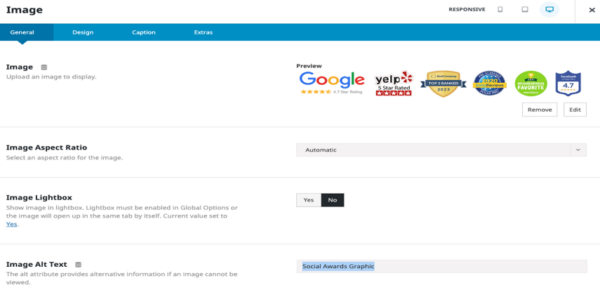 Company top 3 ranked 2023 badge, SolarReviews 2020 Pre-Screen Solar Pro certification badge, NextDoor Neighborhood Favorite 2021 badge, and Facebook 4.7 star reviews logo displayed together in a row”. All buttons and hovers need to be defined as well: “This is a button that will take you to the free quote page,” “hover over this icon and it will show two results: home or business,” etc. These on-page updates do not apply to all companies. Those that are really at the greatest risk are those that are 25 million and above, and for the rest of us, installing an accessibility plugin on WordPress or other CRMS should be adequate. The good news is that your company has 30 days to respond to and amend any notice stating that your site is discriminating against a type of user before you might find yourself in a lawsuit or the subject of a penalty.
Company top 3 ranked 2023 badge, SolarReviews 2020 Pre-Screen Solar Pro certification badge, NextDoor Neighborhood Favorite 2021 badge, and Facebook 4.7 star reviews logo displayed together in a row”. All buttons and hovers need to be defined as well: “This is a button that will take you to the free quote page,” “hover over this icon and it will show two results: home or business,” etc. These on-page updates do not apply to all companies. Those that are really at the greatest risk are those that are 25 million and above, and for the rest of us, installing an accessibility plugin on WordPress or other CRMS should be adequate. The good news is that your company has 30 days to respond to and amend any notice stating that your site is discriminating against a type of user before you might find yourself in a lawsuit or the subject of a penalty.
You may think that sounds like a big commitment, but it doesn’t have to be. The most important thing is to make sure your website has been optimized with Meta Titles, Meta Descriptions, Meta Keywords, basic Alt Tags, a G4 Analytics code to track user traffic (bonus if you add events to track soft & hard goals), a privacy policy, and a sitemap.
Then comes off-site SEO. Search engines assume that high-value websites, or more trusted sites with better content for the consumer, will have more references or links found on other reputable sites online. Just like when we buy media through the exchange, search engines believe that any website that has more than 10,000 daily unique visitors is considered more valuable; otherwise, they wouldn’t have this type of daily traffic. It means that whatever content they are providing, people like it and come back for more. If one of those high-value sites has a hyperlink and a reference to your site, that means that we trust you more by association. Thus, the goal of off-site SEO is to link-build, or create backlinks, and to have as many references to your site on other valuable sites as possible. This can be a lot of work, and for years my agency provided these services to clients because it was easier to achieve results and stay at the top of organic search. What changed? There were fewer companies online and more tips and tricks like keyword stuffing or ways to ping the Google Search Console to crawl our sites faster. Those techniques labeled “black hat” no longer work and will have the opposite result of dropping your rank. All that said, when I first started playing the game in 2011, the results were undeniable.
I learned SEO from a local dude named Nate Burgoyne. He was highly recommended to me by a friend who said, “Nate is by far the best SEO guy I have ever worked with,” and he gave me his number. When I called Nate, he gave me his rate and said that for most people, an hour or two-lessons was enough to get me started. At the time, I was helping my ex-husband with his private chef company, Covert Affairs, and was all-in. He was cooking for Kanye West, Seal, and Mariah Carrey. Big names, and I knew that with a better online presence, his business would grow. Nate came to our rental in St. Louis Heights and told me what I needed to do. “Ok, so just like our strategy is to increase organic search on Google, there are other companies out there whose goal is to generate more traffic to their URLs so they can sell advertising. How they do that is they need a lot of content, but they don’t have enough writers to stay competitive, so what they do is use syndicated content,” he paused and opened a site called EZArticles.com, an article publishing system. I needed to open an account and become an expert author in our category, posting 3-5 articles every month. The trick was that the article could not include anything about your company; it had to be generic. Nate proceeded, “Then, when the article is approved on the bottom, they will include a short paragraph and link back to your site in the about the author section,” which is the backlink that you need to increase your total rank. It seemed easy enough, right? Wrong. It was pretty hard to get the articles approved at first. The rules on length, formatting, and style were limiting. They had guidelines or tips on what types of articles were recommended, for example, 5 tips to make your polenta perfect, tasty local Hawaii recipes to try, four popular ways to cut a pineapple, do’s and don’ts to fry the perfect malasada, etc. Once they did get approved, the publishers would pick up your article and repost it on hundreds of other sites, lifting your off-site rank. To really maximize your results, you would take the same article and rewrite it, but this time include references to your brand, layer as many keywords as you could, and post it to your blog. Now you had off-site and on-site growing together and working in tandem. The last step is: “Now you want to write a social media post with a link to your blog on Facebook, so you have another direct reference to your content.” It seemed to make sense. I wrote three on-site articles a week, one new recipe, a wine review, and a restaurant review, plus 3 off-site articles a month about finding the best private chef or other related topics to increase the number of “Private Chef Hawaii” references as much as possible. The results, CovertAffairs.com was at the top of search for years, even long after I stopped creating new content.
However, suddenly, sites that were once successful at lifting keyword rank month-over-month started to go backward, not forward. Overall, there was just too much competition to keep up with, and it wasn’t worth the time and investment for either party—the agency or the client. That’s when we switched our strategy, and today, we use EINnewsire.com distribution to achieve productive rank growth for clients. It’s slow and steady.
By pushing funds toward Search Marketing, we can guarantee that your ad will reach the top of the page, and at a lower cost, because unlike paying for organic placement, impressions are free in paid search. So, let’s let Google or Microsoft run our ads based on exactly what crazy search term the customer enters (as long as it’s on our exact match list), building impression share, and brand share of mind (brand power). Now, instead of paying hundreds a month for the chance to be seen, we pay for actual human website traffic while protecting against customer thresholding (this means that we tell ClickCease how frequently to show the same person who already clicked on our ad another ad, which protects against abuse by not allowing the same person or a competitor to click on your ad multiple times and exhaust your budget). Then our goal as marketers is to increase results through deeper optimization on both ends. The better our offsite rank and onsite performance, the more our ads will show at a lower cost per click. That’s all there is to it. It’s not complicated, but like everything we have been learning, it can change, so we need the flexibility to pivot. For example, several years ago, the go-to press release distribution partner was PR Newswire but then we made the switch to EIN for two reasons. The price was much lower, but more importantly, we noticed that old releases had been taken down from third-party websites on PR Newswire. That’s right, we clicked on the provided report hyperlinks, and after 3 months, the content was no longer available, resulting in no backlink increase, aka, a waste of money.
Online platform changes may be scary, but it’s all about perspective. I always tell my team, “Hey, let’s keep looking at the data and understand that we will figure it out first,” and we tend to. Change is the opportunity to get ahead of competitors who put trust in the wrong partners, aren’t asking the right questions, or have set and forgotten their digital strategies. It worked before and will keep working, right? Wrong.
When I first noticed how valuable EINnewswire.com was to moving the needle, it was during a routine visit to one of my favorite sites, spyfu.com. They provide both a premium paid version and a free tool that allows you to spy on a competitor’s traffic — how many keywords did they gain or lose, are they advertising online and what are they spending, how does your website compare and does Google even consider you a paid or organic competitor of that domain, etc. I use it frequently, and no, it’s not perfect. For instance, I can tell you that the estimated AdWords budgets are not correct. Whatever you see in Spyfu multiplies it by 4-5x and that’s closer to what true spend is, but regardless, it’s a helpful resource. During this visit, I noticed that all our press releases were listed with exceptional backlink value. Here’s an example of a recent one we published for Pacific Air Cargo. The result is a double win and a way to combine Public Relations services with Off-Site SEO for the agency. The cost? Just $99 per release or cheaper with a package (recommended to go Pro for the best value; more links!) That’s math everyone can subscribe to.

And now that we know how it all works, here’s how you spot a fraud. I will say, however, that just because your SEO company hasn’t lifted your rank doesn’t mean that they are frauds; they might be trying hard and doing the promised work. The agency had a partner in India who worked his butt off, but the rank kept slipping. How I knew he wasn’t a fraud was that he provided supporting, detailed reports to the agency, and even when the rank slipped, he was honest and still showed the unfavorable results, including a plan or recommendation on how to achieve the desired rank once again.
So, for all of you companies being sold “SEO services” from the USA or abroad, the same rules apply. Every month, you should be presented with a current report of your site’s rank based on a list of keyword phrases. You should have two reports, one for the full universe of Google and one that is localized; for example, what would someone searching in Seattle see? Your SEO partner should also be telling you when they expect to lift your rank from whatever current position to a future desired position of 1–5, or page 1 of the results. You should also have a list of keywords that you are watching and working on moving up into basic indexing so that you can establish a first rank. That’s the first step in moving up; you need a current rank number, 260 or whatever it is, and a plan in place for how many months and articles it will take to get you to position 100, then to 50, and then to 20, and then to 5, and then if you slip to 7, why and how long to get back to 5, you get the idea. A lot of this work demands the ability to evaluate data to project future trends and potential outcomes for your rank. If they are not providing you with those two things, then it’s time to press pause. That’s the bare minimum. You should also be receiving proof (links) to the published articles on whatever network they are using, as well as reports on how many references to your offsite content have been published. For companies that are just getting started, don’t even start unless you are willing to commit for 2-3 years and are happy not to receive any trackable or direct ROI.
I’m not saying SEO strategies don’t or won’t work. All that I’m saying is to set your expectations, trust your instincts, and, as with most things, if you’re in it for the long haul, be patient.
